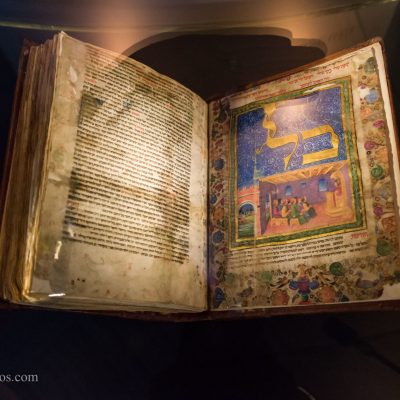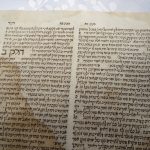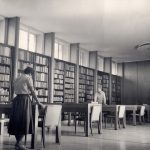Nuremberg Machzor
The Nuremberg Machzor is a handwritten, lavishly decorated book of more than 1000 pages, containing the entire Ashkenazi yearly cycle of prayers, liturgical poems, rites, and commentaries from the high Middle Ages (circa 1330). The massive manuscript was written by scribes and illustrated by artists, using gold and silver leaves and precious pigments. Weighting 26 kilograms, the Machzor is one of the world’s most valuable medieval manuscripts. For many years, it was located in the German National Museum in Nuremberg. When Napoleon occupied the city in 1801, his soldiers cut out and pilfered eleven illustrated Machzor pages.
After fleeing Germany in 1934, Schocken acquired four of the missing Machzor pages. He was determined to bring the rest of the Machzor to Jerusalem. Following World War II, Schocken entered negotiations with West Germany’s government concerning reparations. His goal was to acquire the entire manuscript as part of the restitution for property he had lost to the Nazi regime. In 1951, Schocken and the German authorities came to an agreement, and the Machzor arrived at the Schocken Library in Jerusalem. In 2005 the Machzor was sold to Dr. David Jeselsohn, who loaned it to the National Library in Jerusalem, its present home. Six of the missing Machzor pages are still at large.


